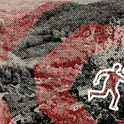Imagine a traditional wine tasting: a connoisseur holding forth about the marvels of this particular vintage while people clutch their glasses nervously, trying to find on their own palates the declared breed, typicity and terroir this wine is said to show. The trouble with these traditional tastings is that it can leave anxious drinkers aware of the tremendous gap between what the expert knows and what they can experience for themselves. Talk such as—“this is a tight-knit Bordeaux with good tannin management and some spicy oak”— can leave you feeling like an outsider.
Fortunately, things are changing. Producers and merchants are thinking hard about how to encourage consumers to build up their own skills as tasters. Studies by the University of Dijon show that novices are just as discriminating as experts and can equally pick out the finer features of wine; they just don’t know that they can.
The best way is not to shower people with descriptions of the white peach and melon but to give them two wines to compare and ask how they differ. Comparative tasting is much easier than being given a single glass of wine and asked what we think of it. Such tastings would be ideal in restaurants, too; I have dreamt of being allowed to taste a couple of wines from the list before having to choose one. It may yet happen: high-tech devices such as the Coravin, which inserts a slender needle through the foil and into the cork, may allow a sommelier to remove a sample of wine from the bottle without any deleterious effect.
What experts do when they compare wines can be done by anyone. Do you find one of the wines fresher, more lively and less tiring to drink than the other? This may mean there is more crisp acidity to tingle your tongue.
In general, red wines are lower in acidity than whites, but slight differences can lend a refreshing fruit character to a red wine. Think of high acidity Beaujolais and how much more refreshing it is than a Côtes du Rhône, which is why the former makes a better aperitif and the latter a better partner for lamb. As a rule, the higher the acidity of a red, the lower the tannin content (which experts will allude to as the “structure” of the wine). Tannins come from the skins and the pips of the pressed grapes while in contact with the juice. Combining lots of tannin with high acidity produces harsh, tough wines that give very little pleasure; but insufficient tannins can leave a wine lacking body. That is why it is best to cool Beaujolais a little, to accentuate the bitter notes and acidity. Again, it is easy to show this effect by offering drinkers glasses of room temperature and cool wine to compare. People know which one they prefer; they just don’t know why they do.
Novices are already aware of tannins by the effect they have on the inside of the mouth: that puckering, almost drying effect. People often say, “Oh, I don’t like that taste,” when they encounter a young Bordeaux or Barolo; but it is not so much a taste as a feeling of astringency that combines with tastes and aromas to create the whole flavour profile of the wine. I am receiving more requests these days to help with less traditional wine tastings that help drinkers to recognise the effects different wine styles have on their sense of smell, taste and touch. Once you learn what effect tannins have on you, it becomes possible to judge whether they are fine or coarse, persistent or absent.
Wine events that let tasters discover these things for themselves are surely the way to introduce them to the finer features of what they are drinking. They can demystify the world of wine, and lead drinkers to make more discriminating judgements. It is time to let a little light into the cellar.











